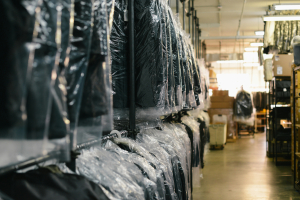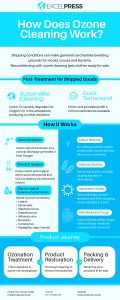Reverse Logistics in Fashion: A Guide for Retailers
In fashion retail, returns are an everyday occurrence that must be managed effectively. It’s more than reversing the sale and providing a refund: the returned garment goes on a journey of its own before it can be resold. An efficient returns management process can save costs and improve business practices.
Reverse logistics refers to the inverse of the standard supply chain, in which goods flow from manufacturer to consumer. Reverse logistics includes returns management, refurbishment or reconditioning, recycling, and disposal, and should be included in any supply chain management plan. A simplified process for dealing with returned items is easily achieved when working with a trusted garment reprocessing firm.
Our Returns Management Service

How does this work?
When an end customer returns a garment to the retailer, your reverse logistics system includes the returns policy and everything that happens to the garment until it is restocked.
A returned garment must undergo reconditioning or garment reprocessing before it can be resold, for reasons of quality control and hygiene. This reconditioning involves inspecting, cleaning and repackaging garments.
A Typical Garment Returns Process
1. Retailers store returned items until there are enough units to make up a batch, or until the scheduled returns collection date. They send this batch of returned items to their garment reprocessing provider. Providers may include a collection service, which can be more affordable for small enterprises without their own fleet.
2. The returned items enter our specially designed white room, which provides ample lighting for detailed quality control inspections.
Items are inspected for
- Visual or functional defects
- Presence of specified features
- Correct measurements
- Correct labels and ticketing
3. Items that pass inspection are reprocessed to get them ready for sale again. Procedures include ozone cleaning to destroy bacteria, viruses or mould, and further cleaning to remove debris or marks.
4. We send items to garment pressing using steam tunnelling, flatbed, or another method suited to the materials.
5. Some items may need relabelling or reticketing with the correct sizing and details.
6. Repackaging may include hanging or plastic wrapping.
7. Garments are then shipped back to the retailer for resale. Unsaleable items are also shipped, marked for recycling.
Storage, Transport and Logistics
A quality reverse logistics process will consider that reconditioned garments for full-price resale will need integration into existing stock. This can create recurring issues with stock flow and records, so choose a reverse logistics service that can provide:
- Hanging garment & palletised stock storage for flexible terms
- Pick & pack distribution & fulfilment
- Specialised garment transport in hanging garment trailers
Our Returns Management Service

But what about those garments that are damaged?
Unsaleable items are also shipped, marked for recycling. We can arrange confidential disposal on request.
In some cases, minor repairs can be a more sustainable solution. We match thread colours exactly, providing professional repairs that are indistinguishable from the garment’s original condition.
What happens after garment reprocessing?
After garment reconditioning, we repackage the items, and they enter distribution. We can deliver the items to our clients’ retail distribution centres throughout the UK with a full report. Retailers can then return the items to stock in their online or high-street stores.
Garment Reconditioning – an Essential Retail Service
Without effective planning, the prevalence of returned items can lead to costly additional services. While some reverse logistics systems involve returning garments to the manufacturer, most returns can be handled by a garment reconditioning service.
These services are often more cost-effective and convenient, require less transport and have a faster turnaround. A dedicated reconditioning service is often more sustainable than tracing back the full supply chain, particularly if manufacturers are overseas.
Our Returns Management Service





